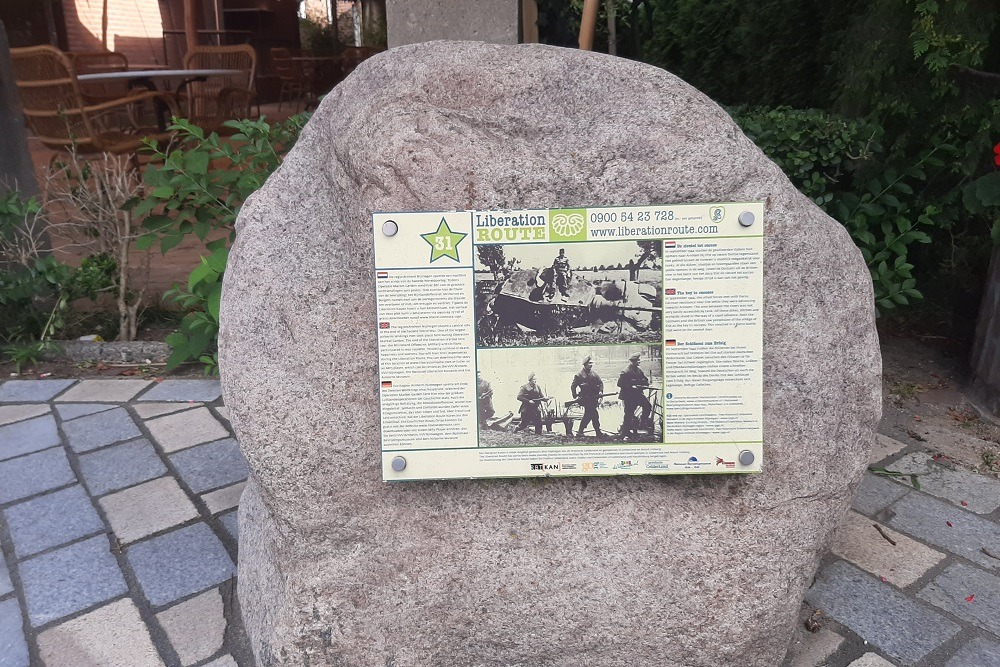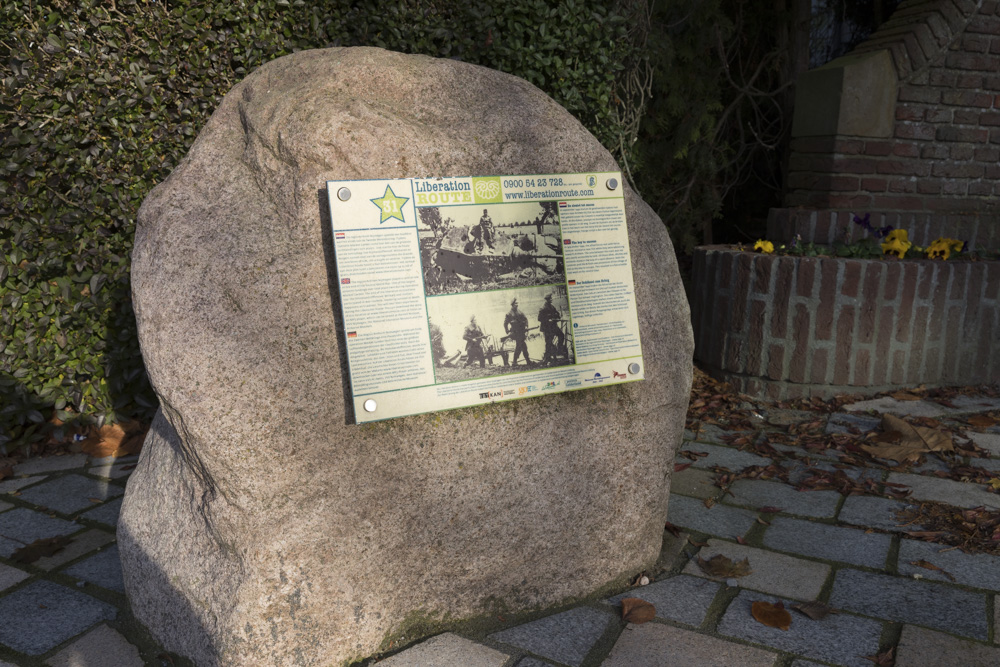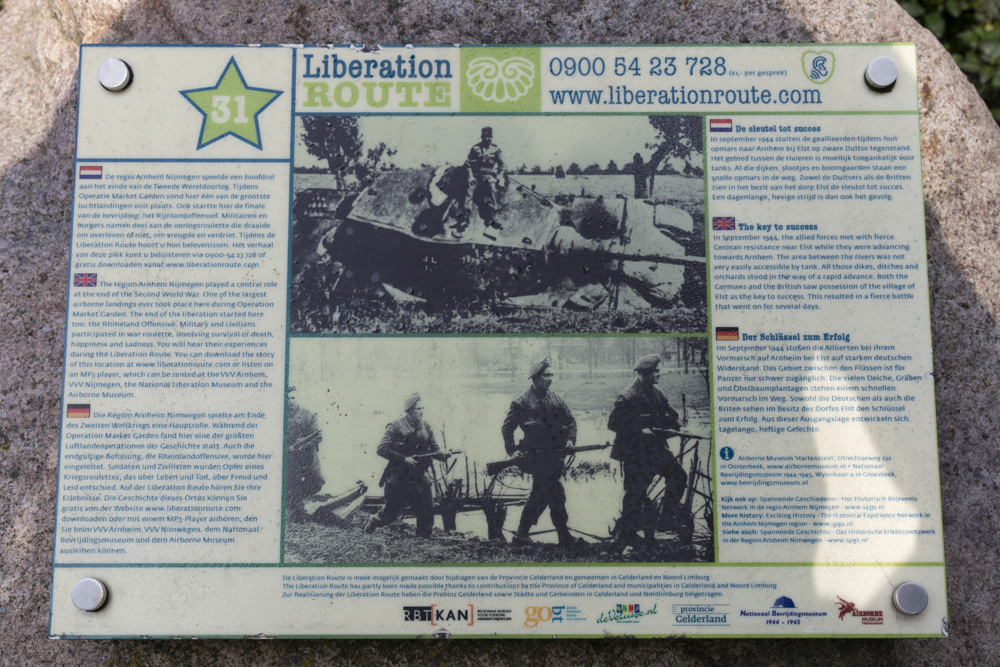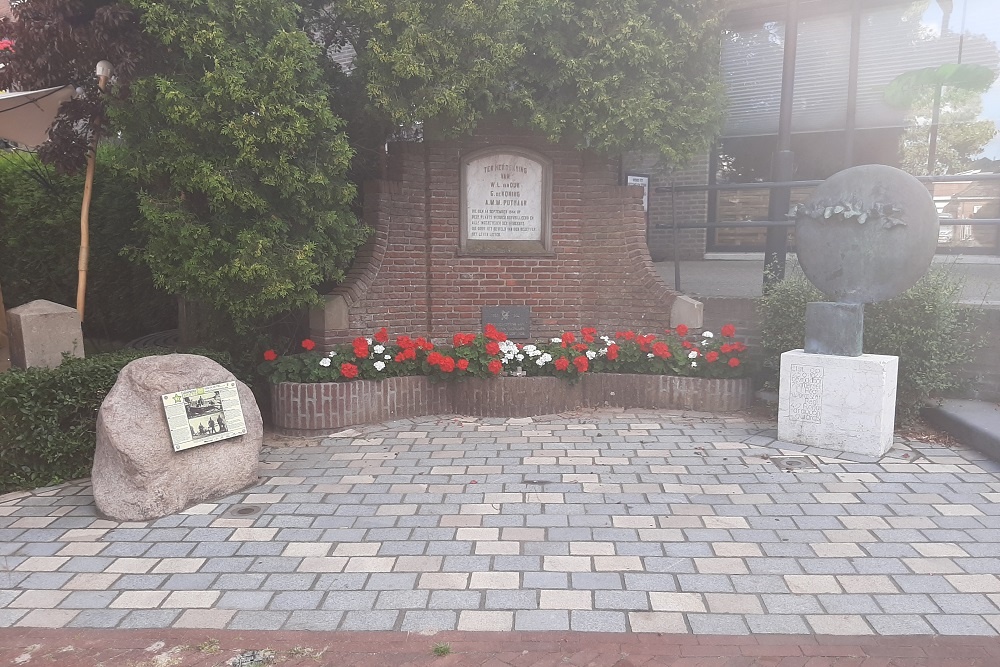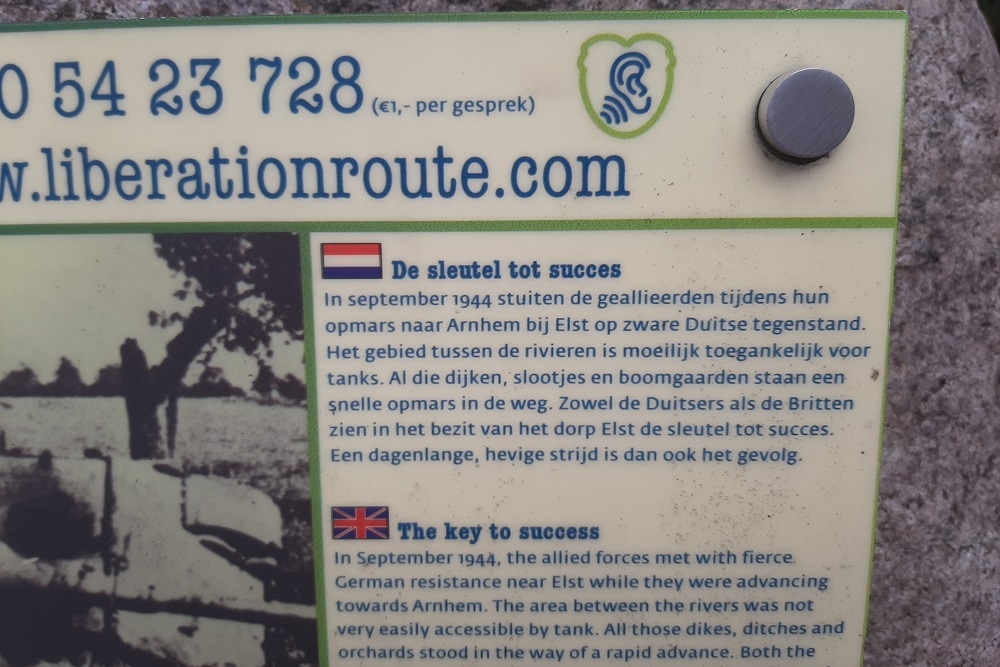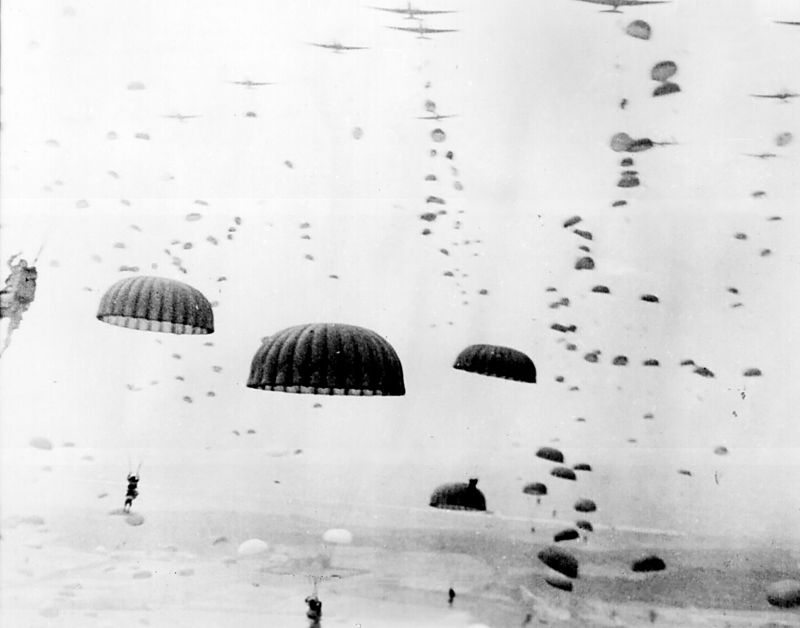Liberation Route Marker 031: The key to success
The key to success
In September 1944, the allied forces met with fierce German resistance near Elst while they were advancing towards Arnhem. The area between the rivers was not very easily accessible by tank. All those dikes, ditches and orchards stood in the way of a rapid advance. Both the Germans and the British saw possession of the village of Elst as the key to success. This resulted in a fierce battle that went on for several days.
By the evening of 20th September 1944, the bridge over the Waal in Nijmegen had fallen into Allied hands. It had remained undamaged and it was now up to the British ground forces to push on towards Arnhem to complete the last phase of Operation Market Garden. It was 11 o'clock on the 21st September however, when the British troops finally started its advance. By that time, the Germans had already set up an ambush to the south of Elst, which the British soon stumbled upon.
On 22nd September, the British troops marched along the narrow roads to the west of Elst on their way to Driel. There, they joined the Polish parachutists who had landed there on the 21st. During this manoeuvre, the British rushed to set up their own ambush for the German tanks of Hummel's schwere Panzer Kompanie (heavy tank company), destroying at least five of his tanks, (as described in the audio story). Subsequently, the British troops attacked Elst from the west and liberated it on 26th September 1944.
Audiospot - The key to success
Liberation Route Europe is a certified Cultural Route of the Council of Europe. With hundreds of sites and stories in nine European countries, the route links the main regions along the advance of the Allied Forces in 1943-1945.
The entire route consists of themed routes that can be travelled by by hiking, walking, cycling and car. These routes pass numerous historical and interesting sites and tell stories from a multitude of perspectives that were important in the final phase of World War II.
Many routes feature listening spots, offering the opportunity to listen to a historical story at a location. In addition, many ‘Vectors of Memory’ have been placed, indicating that the passer-by is on one of the Liberation Routes.
The routes can be found on the Liberation Route Europe website or in the app through which many stories can also be listened to.
Do you have more information about this location? Inform us!
Source
- Text: TracesOfWar & Liberation Route Europe
- Photos: Dick de Bruijne (1, 4, 5), Arjan Vrieze (2, 3)
Related books
Nearby
Museum
- Information Centre: The Poles of Driel - Driel
- Airborne Museum 'Hartenstein' - Oosterbeek
- Airborne at the Bridge - Arnhem
Point of interest
Monument
- War Memorial Elst - Elst
- Memorial "The Incredible Patrol" Elst - Elst
- Memorial Killed NS Employees Elst - Elst
Cemetery
- Dutch War Graves RC Cemetery Elst - Elst
- Dutch War Graves RC Cemetery Elst - Elst
- Cemetery De Teselaar - Bemmel
Remembrance Stone
- Stumbling Stone Dorpsstraat 36 - Elst
- Stumbling Stones Dorpsstraat 7 - Elst
- Stumbling Stone Rijksweg Noord 25 - Elst
Fortification
- Main Defence line Over-Betuwe Casemate 40 - Bemmel
- Main Defence line Over-Betuwe Casemate 39 - Bemmel
- Main Defence line Over-Betuwe Casemate 44 - Bemmel
